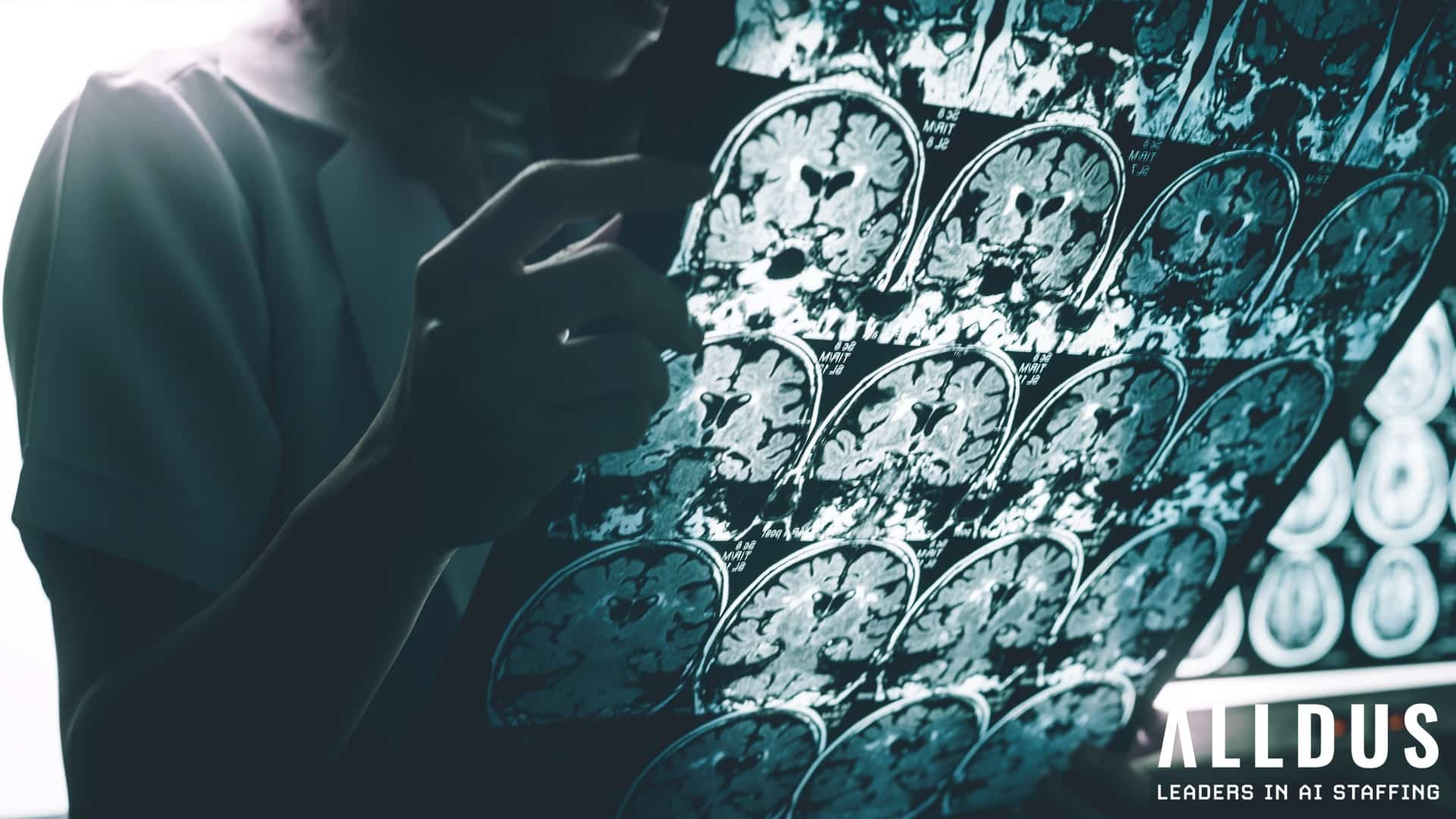Alzheimer’s Detection Better Than Ever, Thanks To AI
Blog | March 14 2019 | Alldus Recruitment
Alzheimer’s disease affects 48 million worldwide. It is estimated 55,000 people in Ireland live with Alzheimer’s and many people believe that number is set to rise. Currently, there is no cure for this devastating brain disease.
However, there are new promising drugs on the market that can help to stem the disease’s progression. These new drugs must be administered in the early stages of the disease for them to be most effective.
One of the difficulties with Alzheimer’s disease is that by the time we can make a definitive diagnosis, too many neurons have died. Making the disease essentially irreversible,” – Jae Ho Sohn, MD, MS, a resident in the Department of Radiology and Biomedical Imaging at UC San Francisco.
Scientists have worked tirelessly to develop new techniques that can identify symptoms of Alzheimer’s disease earlier than before, potentially giving doctors a chance to intervene with treatment, which is due in large part to Artificial Intelligence.
The most effective PET scans (Positron emission tomography) used for the detection of Alzheimer’s disease are very expensive. They look for specific proteins related to Alzheimer’s disease. However, Dr. Sohn’s research is more cost effective for smaller hospitals and developing countries.
Glucose is the primary fuel source for brain cells, so as brain cells become more diseased they use less and less glucose. However, because Alzheimer’s disease progresses very slowly, the changes in glucose levels are difficult to detect with the naked eye.
By combining neuroimaging and machine learning algorithms, Dr Sohn has developed a technique that helps diagnose early-stage Alzheimer’s disease more reliably.
This is an ideal application of deep learning because it is particularly strong at finding very subtle but diffuse processes. Human radiologists are really strong at identifying tiny focal finding like a brain tumor, but we struggle at detecting more slow, global changes,” says Sohn.
To train the algorithm, Sohn fed it images from a massive public dataset of PET scans from patients who were eventually diagnosed with either Alzheimer’s disease, mild cognitive impairment or no disorder. The algorithm then began to learn which features are most important for diagnosing Alzheimers disease and which are not.
So how do they know that it works?
The success of the experiment was tested on two novel data sets. One from the public database used for the experiment, which the algorithm was not allowed to learn from. The second was a set of scans from patients who had presented to the UCSF Memory and Aging Center. The results were very conclusive.
The algorithm correctly identified 92 per cent of patients who developed Alzheimer’s disease in the first test set and 98 per cent in the second test set. Most importantly, it made these predictions on average 75 months before the patient’s clinical diagnosis. That’s an improvement of over six years.
The next step is to train the algorithm on larger and more diverse data sets from different hospitals and countries.
He goes on to say that hopefully, the algorithm can become a vital tool for Neurologists when diagnosing Alzheimer’s disease. This will allow patients to get treatment sooner.
share
related articles
Women in AI: Bridging the Gap
Despite huge advancements in AI research, the field still lags in another key area of societal progress, gender equality. With women accounting for just 22% of professionals in the field, we examine the steps needed to address this inequality and how it would also benefit the technologies themselves
Why SQL is the base knowledge for data science
As a programming language, It's a simple skill to learn, but a very valuable one. A walk in the park compared to Python or R.
Why NLP is the future of E-Commerce
There are great benefits to using NLP in eCommerce. The world of business would be greatly benefited from in-depth insights that are controlled by AI. It will help in increasing customer satisfaction rates, improve the revenue curve & ultimately transform the future of business operations.




